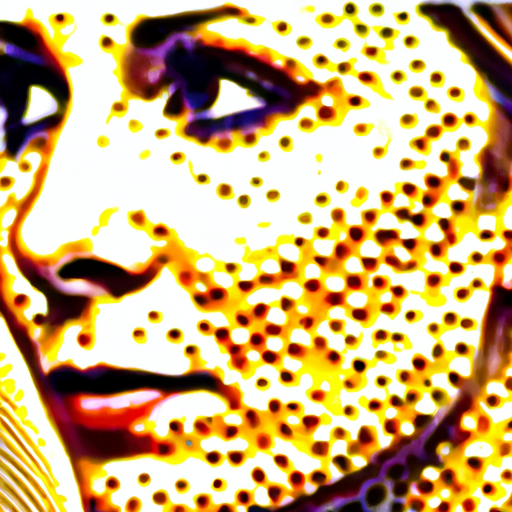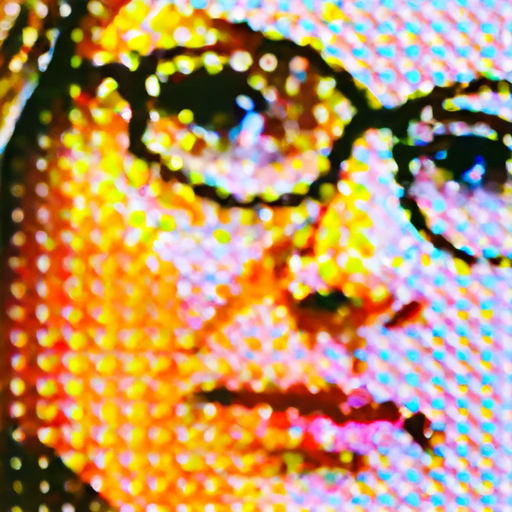
-
Table of Contents
- Pointillism’s Pixels: Digital Art with an Impression
- The Origins of Pointillism
- Digital Pointillism: The Marriage of Art and Technology
- Techniques and Tools of Digital Pointillism
- The Impact of Digital Pointillism
- Case Studies: Digital Pointillism in Practice
- 1. Miguel Endara
- 2. Xavier Casalta
- Conclusion
Pointillism’s Pixels: Digital Art with an Impression

Art has always been a reflection of the times, and as technology continues to advance, so does the medium through which artists express themselves. One such medium that has gained popularity in recent years is digital art. Within the realm of digital art, there is a technique that draws inspiration from the traditional art movement of pointillism – a technique known as “digital pointillism.” This article explores the concept of digital pointillism, its history, techniques, and the impact it has had on the art world.
The Origins of Pointillism
Before delving into digital pointillism, it is essential to understand the origins of the traditional pointillism movement. Pointillism emerged in the late 19th century as a reaction against the traditional art techniques of the time. It was pioneered by artists such as Georges Seurat and Paul Signac, who sought to create a new way of representing light and color in their paintings.
The technique of pointillism involves applying small dots or strokes of pure color to a canvas, which, when viewed from a distance, blend together to create an optical illusion of a more vibrant and luminous image. This technique was a departure from the traditional method of mixing colors on a palette before applying them to the canvas.
Digital Pointillism: The Marriage of Art and Technology
With the advent of digital technology, artists began to explore new ways of creating art. Digital pointillism emerged as a technique that combines the principles of traditional pointillism with the capabilities of digital tools. Instead of using physical paintbrushes and canvases, artists now use digital software and tools to create their artwork.
One of the key advantages of digital pointillism is the ability to create precise and consistent dots or pixels. Digital tools allow artists to control the size, shape, and color of each individual dot, resulting in a more refined and detailed artwork. Additionally, digital art software provides artists with a wide range of color options, allowing for greater experimentation and creativity.
Techniques and Tools of Digital Pointillism
Creating digital pointillist artwork requires a combination of artistic skill and technical knowledge. Here are some of the techniques and tools commonly used by digital pointillist artists:
- Pixel-based software: Artists use software such as Adobe Photoshop or Procreate, which allows them to work with individual pixels and create precise dot patterns.
- Brush customization: Artists can customize their digital brushes to create different dot shapes, sizes, and textures.
- Layering: Digital pointillist artists often work with multiple layers, allowing them to build up the image gradually and make adjustments easily.
- Color blending: Digital software provides various tools for blending colors, allowing artists to achieve smooth transitions between dots.
The Impact of Digital Pointillism
Digital pointillism has had a significant impact on the art world, both in terms of artistic expression and accessibility. Here are some key ways in which digital pointillism has influenced the art world:
- Expanding artistic possibilities: Digital pointillism has opened up new possibilities for artists to explore and experiment with color, light, and texture. The precise control offered by digital tools allows artists to push the boundaries of traditional pointillism.
- Accessibility and democratization: Digital art has made art more accessible to a wider audience. With the rise of social media platforms and online galleries, artists can easily share their digital pointillist creations with the world, reaching a global audience.
- Collaboration and community: Digital platforms have facilitated collaboration and community-building among digital pointillist artists. Online forums and social media groups provide spaces for artists to share techniques, provide feedback, and inspire each other.
- Commercial opportunities: Digital pointillism has also opened up new commercial opportunities for artists. Digital artwork can be easily reproduced and printed on various mediums, such as canvas prints, posters, or even merchandise.
Case Studies: Digital Pointillism in Practice
To further illustrate the impact and versatility of digital pointillism, let’s explore a few case studies of artists who have embraced this technique:
1. Miguel Endara
Miguel Endara is a renowned digital pointillist artist known for his incredibly detailed portraits created using thousands of dots. His most famous work, “Hero,” is a portrait of his father, composed of over 3.2 million ink dots. Endara’s work showcases the meticulous precision and patience required for digital pointillism.
2. Xavier Casalta
Xavier Casalta is another artist who has gained recognition for his digital pointillist creations. His artwork often features intricate patterns and textures, created using thousands of individual dots. Casalta’s work demonstrates the versatility of digital pointillism, as he explores various subjects and styles.
Conclusion
Digital pointillism is a testament to the ever-evolving nature of art and technology. By combining the principles of traditional pointillism with the capabilities of digital tools, artists have been able to push the boundaries of artistic expression. Digital pointillism offers artists greater control, precision, and accessibility, while also opening up new commercial opportunities. As technology continues to advance, it will be fascinating to see how digital pointillism evolves and influences the art world in the years to come.
